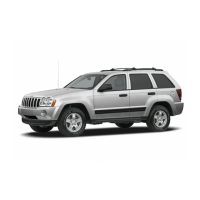
Do you have a question about the Jeep 2007 Grand Cherokee Series and is the answer not in the manual?
| Brand | Jeep |
|---|---|
| Model | 2007 Grand Cherokee Series |
| Category | Automobile |
| Language | English |
Welcome to the Jeep Grand Cherokee family and overview of the vehicle's capabilities.
Warning about the higher roll over rate of utility vehicles due to center of gravity and track.
Guidance on navigating the manual using the table of contents and index.
Information about vehicle keys and the key code number.
Procedure for removing the ignition key.
Description of the chime that sounds when the driver's door is open with the key in ignition.
Explanation of the system that prevents unauthorized vehicle operation by disabling the engine.
Details on the system that monitors doors, liftgate, and ignition for unauthorized operation.
System allowing locking/unlocking doors and liftgate from a distance using a handheld transmitter.
Instructions on using the transmitter's 'Unlock' button to unlock the vehicle.
Instructions on using the transmitter's 'Lock' button to lock the vehicle.
How to activate or deactivate the panic alarm feature.
Information on checking and replacing the remote keyless entry transmitter battery.
Instructions for starting the vehicle remotely using the key fob.
Explanation of manual and power door lock systems.
How to operate the child protection locks on the rear doors.
Information on power window controls and operation.
Details on the automatic window down feature.
Description of the anti-pinch feature for automatic window closure.
Instructions on how to open the vehicle's liftgate.
Information on opening the liftgate's flipper glass.
Overview of the vehicle's restraint systems including seat belts and airbags.
Description of the combination lap/shoulder belts and their retractor design.
Step-by-step guide on how to properly use and buckle the lap/shoulder belts.
How to adjust the shoulder belt anchorage for proper positioning.
Explanation of the automatic pre-locking feature for shoulder belts.
Description of the safety belt system's feature to reduce injury risk in head-on collisions.
Details on the device that removes slack from seat belts during a collision.
Recommendations for pregnant women using seat belts.
Information on when and how to use a seat belt extender.
Information on front airbags, window bags, and knee bolsters.
Location and function of the side curtain airbags.
List of components that make up the vehicle's airbag system.
Explanation of how the Occupant Restraint Control (ORC) module detects collisions and deploys airbags.
Description of what may occur during and after an airbag deployment.
Important warnings and recommendations for maintaining the airbag system.
Information on the airbag warning light and when to service the system.
Explanation of the system that records vehicle data prior to airbag deployment.
Information on child restraint laws and proper usage.
Recommendations for infant and child restraint types and usage.
Guidance for selecting and using child restraints for older children.
Details on the LATCH system for child restraint installation.
Instructions for installing child restraints using the LATCH system.
Instructions for installing child restraints using the vehicle's seat belt.
Guidance on correctly attaching the tether strap to the anchorage.
Recommendations for safely transporting pets in the vehicle.
Guidelines for breaking in the new vehicle's engine.
General safety advice for vehicle operation.
Precautions regarding exhaust gases and carbon monoxide.
Recommended safety checks to perform inside the vehicle.
Instructions for inspecting seat belts for condition and proper function.
Recommended safety checks to perform outside the vehicle.
General information regarding vehicle tires.
Procedure for checking the operation of all exterior lights.
Instructions for checking for fluid leaks under the vehicle.
Information on inside and outside mirrors, including day/night and automatic dimming features.
Instructions for adjusting the interior rearview mirror.
How the automatic dimming mirror adjusts for headlight glare.
Guidance on adjusting outside mirrors for maximum benefit.
Description of the hinged exterior mirrors and their detent positions.
Instructions for folding and unfolding the outside mirrors using the power switch.
Operation of the driver's outside automatic dimming mirror.
How to operate power mirrors using the door trim panel switch.
Information on heated mirrors for melting frost or ice.
How to access and use the lighted vanity mirrors.
Overview of the voice-activated, hands-free communication system.
How to use voice commands to operate the UConnect system.
Reference to the voice command structure for UConnect.
How to get assistance or know available options at any prompt.
How to cancel a command and return to the main menu.
Instructions for pairing a Bluetooth-enabled cellular phone with the UConnect system.
How to initiate a phone call by speaking the number.
How to initiate a phone call by speaking a contact's name from the phonebook.
Instructions for adding new entries to the UConnect phonebook.
How to edit existing phonebook entries.
Instructions for deleting phonebook entries.
How to erase all phonebook entries from the system.
How to list all names stored in the UConnect phonebook.
Features accessible through UConnect for managing phone calls.
How to handle an incoming call when another call is already in progress.
How to make a second call while a current call is active.
Instructions for placing a call on hold and retrieving it.
How to combine two calls into a single conference call.
How to end an active call and manage held calls.
How to redial the last number called.
How calls can continue on UConnect after ignition is switched off.
Overview of additional UConnect system features.
How to change the system language for prompts and voice commands.
How to contact emergency services using the UConnect system.
How to use the UConnect system to request towing assistance.
How to use UConnect to access automated systems like voice mail.
Tips and guidelines for optimal voice recognition performance.
Factors affecting audio clarity, echo, and loudness in UConnect calls.
Troubleshooting tips for Bluetooth connection issues with UConnect.
The required waiting period after ignition switch change before using the system.
Flowchart illustrating voice commands for phonebook operations.
Flowchart illustrating voice commands for system setup options.
Information on seat adjustments and features.
How to adjust the seat forward or rearward using the adjustment bar.
Instructions for adjusting the seatback recline angle.
How to adjust the manual lumbar support lever for comfort.
Description of the driver's power seat switches and their functions.
Description of the passenger's power seat switches.
How to adjust head restraints to reduce whiplash injury risk.
Information on the comfort and warmth provided by heated seats.
Instructions for lowering the rear seat for cargo space.
How memory buttons recall seat, mirror, and pedal positions.
Step-by-step guide to setting memory positions and linking key fobs.
How to recall stored memory positions for the driver's seat, mirrors, and pedals.
Instructions for disabling a transmitter linked to memory positions.
Feature providing automatic driver's seat positioning for easier entry/exit.
Instructions on how to open and close the vehicle's hood.
Information on various exterior and interior lighting functions.
Explanation of the lever controlling headlights, turn signals, and other lighting functions.
How the battery saver feature automatically turns off lights after eight minutes.
How to operate headlights and parking lights using the multi-function lever.
Functionality of the automatic headlight system based on light levels.
Feature that turns headlights on automatically when wipers are activated.
Description of the automatic high beam control system.
How to adjust instrument panel and interior light brightness.
Operation of low-intensity high beam headlights during daytime.
Chime warning if lights are left on after ignition is turned off.
How to activate fog lights using the multi-function control lever.
How to operate turn signals for lane changes.
Feature for automatic turn signal cancellation after lane changes.
How to switch between high and low beam headlights.
How to signal other vehicles with headlights.
Feature that delays turning off vehicle lights after ignition is turned off.
Description of interior courtesy lights and their activation.
How to turn on and off the map and reading lights in the overhead console.
Operation of front and rear wipers and washers.
Using the mist feature for occasional wiper usage.
Explanation of the five intermittent wiper speed settings.
How the feature senses moisture and activates wipers automatically.
Instructions for tilting the steering column for driver comfort.
Feature allowing brake and accelerator pedals to move toward the driver.
Information on the cruise control system and its operation.
How to turn the electronic speed control system ON and OFF.
Procedure to set a desired speed using the cruise control.
How to deactivate the speed control system without erasing memory.
How to resume a previously set speed using the cruise control.
How to increase or decrease the set speed using cruise control.
How to accelerate for passing while using cruise control.
How speed control operates on hills and how to use the brake pedal.
Overview of the electronic brake control system including ABS, TCS, BAS, ERM, and ESP.
How the ABS system maintains vehicle control under adverse braking conditions.
How the TCS system monitors wheel spin and applies brake pressure.
How the BAS system optimizes braking capability during emergency maneuvers.
How the ERM system anticipates potential for wheel lift and applies brakes.
How the ESP system enhances directional control and stability.
Meaning of the ESP/BAS and ESP/TCS indicator lights in the instrument cluster.
System providing visual and audible distance indications when backing up.
Location and function of the four rear park assist sensors.
How the display provides visual and audible warnings of obstacle distance.
How to enable or disable the rear park assist system with a switch.
What the instrument cluster displays when the system is defective.
Instructions for cleaning the rear park assist sensors.
Information about the rear view camera and its on-screen image.
Steps to access and enable the rear camera mode.
Steps to turn off the rear camera mode.
Components of the overhead console including lights, opener, and switches.
How to turn on and off the courtesy and reading lights.
Location and access for the sunglasses storage compartment.
How the HomeLink Universal Transceiver replaces remote controls.
Step-by-step instructions for programming the HomeLink system.
Specific procedures for programming gate operators in Canada.
How to operate a programmed HomeLink button.
How to erase programming from HomeLink buttons.
How to reprogram a single HomeLink button.
Importance of erasing frequencies before selling the vehicle.
Location of the power sunroof switch and safety warnings.
How to open the sunroof automatically from any position.
How to close the sunroof automatically from any position.
Feature that detects obstructions during sunroof closure.
How to override pinch protection to close the sunroof.
How to open the sunroof to the vent position using the V button.
How to operate the sunshade manually and automatically.
Explanation of wind buffeting and how to minimize it.
Recommendations for cleaning the sunroof glass panel.
How power sunroof switches remain active after ignition is turned off.
How to ensure the sunroof is fully closed.
Location and use of front and rear power outlets.
Precautions for using electrical outlets when the engine is off.
Location and description of front and rear cup holders.
Features related to the vehicle's cargo area, including lights and storage.
How the cargo area light is activated and controlled.
Location of the rear storage compartment.
Instructions for covering the cargo area for privacy.
Warning about potential injury from a loose cargo cover in an accident.
How to use tie-downs to safely secure loads in the cargo area.
Warning against using cargo tie-down hooks for child seat tether straps.
Guidelines for loading to avoid loss of control due to weight distribution.
Warning that passengers should not be seated in the rear cargo area.
Description of the reversible cargo load floor and its procedure.
Information on rear window wiper/washer and defroster.
How to operate the rear wiper/washer function.
How to turn on the rear window defroster and heated side mirrors.
Cautionary advice for cleaning the rear window defroster.
Information on external roof luggage racks and their limitations.
Cautionary advice for carrying loads on the roof rack.
Warning about securely tying cargo on the roof rack.
Overview of the instrument panel and its various controls.
Identification of gauges and indicators in the instrument cluster.
Instrument cluster layout for gasoline engine models.
Instrument cluster layout for diesel engine models.
Detailed description of each gauge and warning light in the instrument cluster.
Indicates the vehicle's current speed.
Explanation of the brake warning light and its potential causes.
How the indicator light shows turn signal operation.
Indicates when the headlights are on high beam.
Part of the OBD II system that monitors engine and transmission control systems.
Function of the airbag warning light and when to have the system inspected.
Monitors the Anti-Lock Brake System and indicates when service is required.
Indicates maximum permissible engine revolutions per minute.
Indicator for the vehicle theft alarm system.
Indicates low engine oil pressure and when to stop the vehicle.
Indicator for ESP and TCS activation, and when the system is turned off.
Warns driver of low tire pressure and when a system fault is detected.
Shows engine coolant temperature and indicates satisfactory operation.
How the EVIC displays messages when appropriate conditions exist.
Illuminates when the TOW/HAUL button has been selected.
Malfunction indicator lamp for ESP and BAS systems.
Alerts driver that the vehicle is in the 4WD LOW mode.
Indicates if driver or front passenger seat belt remains unbuckled.
Indicator that lights when the speed control system is turned ON.
Shows the total distance the vehicle has been driven.
Display indicator showing the automatic transmission gear selection.
Shows the level of fuel in the fuel tank when ignition is ON.
Informs driver of a problem with the Electronic Throttle Control system.
System for displaying messages and symbols related to vehicle conditions.
How to access and change vehicle settings via the display.
How to select the display language for nomenclature and trip computer functions.
How to select US or Metric units for displays.
Feature to automatically lock doors and liftgate when vehicle speed reaches 15 mph.
Feature to automatically unlock doors when the driver's door is opened.
Feature to unlock only the driver's door first, then others, or unlock all doors at once.
Linking memory seat, mirror, and radio settings to the remote keyless entry 'Unlock' button.
Feature that causes a short horn sound when the 'Lock' button is pressed.
Feature that flashes turn signals when doors are locked or unlocked.
Option to have headlights remain on for a set time after exiting the vehicle.
Feature to have headlights come on for a set duration when entering the vehicle.
Automatic switching of headlights from high to low beams when approaching a vehicle.
Feature that turns headlights on automatically when wipers are turned on.
Selection between manual and rain sensing modes for front wipers.
Information on setting service intervals for gasoline and diesel engines.
How to reset the accumulated service distance.
Feature for automatic driver's seat positioning for easier entry/exit.
Display of outside temperature, compass headings, and trip information.
How to cycle through displays showing trip computer information.
How to reset the display you are in or reset all displays.
Shows average fuel economy since the last reset.
Shows estimated distance that can be traveled with remaining fuel.
Shows total distance traveled for trip A since the last reset.
Shows total distance traveled for trip B since the last reset.
Shows accumulated ignition ON time since the last reset.
Shows the current pressure of all four road tires.
Shows the distance remaining until service is required.
How to return to the compass/temperature display from a blank screen.
How to manually calibrate the compass if it appears erratic.
General information about radio operation and performance limitations.
Understanding radio signals and factors affecting reception.
Explanation of AM (Amplitude Modulation) and FM (Frequency Modulation) signals.
How electrical disturbances can affect radio transmission.
Factors that can disrupt AM radio reception.
How FM reception is clearer due to filtering of amplitude variations.
Operating instructions for the RAQ radio system.
How to operate the radio, including power and volume controls.
How to turn the radio ON/OFF and adjust volume.
Description of the continuous volume control.
How to select between CD player, Satellite Radio, or VES modes.
How to search for the next listenable station in AM/FM or Satellite mode.
How to cancel sound from speakers and mute microphone in Hands Free mode.
How to scan for listenable stations, pausing for 5 seconds at each.
How to display RBDS information or Radio Text messages.
How to display the time of day.
Step-by-step procedure for setting the clock time.
How to search for the next frequency in AM/FM or Satellite modes.
How to increase or decrease radio frequency.
How to select between AM and FM modes.
How to adjust bass, mid, treble, balance, and fade settings.
Restrictions and limitations for playing MP3 files.
Supported media types for MP3 file recording.
Supported file systems for MP3 media.
Instructions for playing MP3 audio files from a CD.
How to navigate MP3 files using the SEEK button.
Instructions for loading and ejecting CDs for MP3 playback.
How to scroll through TAG information for MP3 discs.
How to operate the CD player for audio playback.
Instructions for inserting a compact disc into the player.
How to navigate tracks on a CD using the SEEK button.
How to cancel sound from speakers and mute the microphone.
How to use the auxiliary jack for audio input from portable devices.
How to cancel sound from speakers in auxiliary mode.
Refer to the Hands Free Phone section for operation.
Refer to the Satellite Radio section for operation.
Operating instructions for the REC radio with navigation system.
How to set the clock using GPS time or user-defined time.
How the GPS receiver synchronizes the system clock to GMT.
How to manually adjust the clock time.
How to change the size of the clock display on audio screens.
Overview of the VES system including DVD player, screen, remote, and headsets.
Location of the DVD player in the center console.
How to lower the LCD screen located on the headliner.
Information on satellite radio technology and service providers.
How to activate Sirius Satellite Radio service.
How to access the ESN/SID for Sirius Satellite Radio system activation.
How to access ESN/SID with REC radios, referencing Navigation User's Manual.
Steps to access ESN/SID with REF radios.
How to select Satellite mode in REF radios.
How to select Satellite mode in RAQ radios.
How to search for the next channel using SEEK or TUNE buttons.
How to store and select up to 10 satellite stations in memory.
Instructions for using the PTY button to select program types.
How to scan for channels matching a selected program type.
How to seek the next channel matching a selected program type.
Tips for ensuring optimum satellite reception.
Reasons why satellite reception may be interrupted.
Location of sound system controls on the steering wheel.
How to seek stations and tune to preset stations.
How to navigate tracks on a CD using the switch.
Precautions for keeping CD/DVD discs in good condition.
How cellular phones can affect radio performance.
Overview of the manual air conditioning and heating system controls.
Description of the rotary knobs for heating/AC and ventilation.
How to control blower speed and turn the system OFF.
How to select air temperature by rotating the center knob.
How to select airflow distribution using the right rotary knob.
How air is directed to the windshield and door windows.
Airflow distribution through front/rear floor outlets and windshield.
Airflow through floor outlets under instrument panel and to rear seating.
Airflow through instrument panel and floor outlets.
Airflow through instrument panel and rear seat registers.
How to select recirculation mode to reuse air inside the vehicle.
How to turn on the air conditioning system.
System that automatically maintains interior comfort level.
Usage of LO AUTO position for front seat occupants.
Usage of HI AUTO position for more airflow or rear occupants.
How to manually override system features.
Chart providing control settings for various weather conditions.
Steps for starting the engine with the selector lever in N or P.
Procedure for starting gasoline engines without pressing the accelerator.
Procedure for starting a potentially flooded engine.
Procedure for starting diesel engines, including glow plug indicator usage.
Guidelines for breaking in the new vehicle's engine.
Precautions and information regarding automatic transmission operation.
System preventing gear shift from P unless brake pedal is pressed.
Explanation of the electronically controlled transmission's shift schedule.
Description of gear ranges P, R, N, D, and ERS operation.
How the Park position supplements the parking brake.
When to shift into Neutral and precautions for towing.
How the transmission automatically upshifts through fifth gear.
How ERS shift control allows selection of desired top gear.
Conditions under which the automatic transmission shifts into Overdrive.
When to use Tow/Haul mode for improved performance and reduced overheating.
How the transmission operates in limp home mode due to abnormal conditions.
Feature designed to improve fuel economy by engaging a clutch.
Method to free a stuck vehicle by rocking it between Drive and Reverse.
Information on Quadra-Trac I and Quadra-Trac II transfer cases.
Operating instructions and precautions for the Quadra-Trac I transfer case.
Operating instructions and precautions for the Quadra-Trac II transfer case.
Information on the appropriate use of each transfer case mode position.
Procedures for shifting between 4 HI and 4 LOW modes.
Features of the Quadra-Drive II system including ELSD axles and transfer case.
Advice for driving utility vehicles on paved roads.
Advice for operating the vehicle off-road, including driving through water and mud.
When to use 4WD LOW range for additional traction.
Precautions to consider before driving through water.
Tips for driving in heavy snow, mud, and sand conditions.
Advice and precautions for climbing steep hills.
How to maintain speed and control when descending hills.
Recommendations for inspecting the vehicle for damage after off-road driving.
How to set and release the parking brake.
How the ABS system aids driver in maintaining vehicle control under adverse braking.
Information on the standard power steering system and its capabilities.
How the MDS feature improves fuel economy by shutting off cylinders.
Information on tire markings, sizing, and safety standards.
Explanation of tire sidewall markings including size designation.
Chart explaining tire size designations.
Information on tire placard location and contents.
Guidelines for vehicle loading to not exceed tire or axle capacity.
How to determine the correct load limit for occupants and cargo.
Essential information on proper tire inflation pressure for safe operation.
Importance of proper tire inflation pressure for vehicle safety and performance.
Where to find and how to check tire inflation pressures.
Requirements for maintaining correct tire pressure during high-speed driving.
Warning about combining radial tires with other types and proper repair.
Warning against spinning wheels above 35 mph when stuck.
How tread wear indicators help determine when tires need replacement.
Factors affecting tire service life and replacement recommendations.
Recommendations for using equivalent replacement tires.
Results of poor suspension alignment and how to diagnose tire pull.
Recommendations for installing tire chains to avoid damage and wear.
Benefits of timely tire rotation for tread life and traction.
How the TPMS warns the driver of low tire pressure.
Description of low tire pressure warnings and system behavior.
What happens when a system fault is detected by the TPMS.
Fuel recommendations for gasoline and diesel engines.
Fuel requirements for 3.7L/4.7L gasoline engines.
Fuel requirements for 5.7L gasoline engines.
Information on reformulated gasoline and its benefits.
Information on gasoline blended with oxygenates like ethanol.
Information on MMT additive and its potential effects on the engine.
Precautions to prevent carbon monoxide poisoning from exhaust gases.
Information specific to Flexible Fuel vehicles using E-85.
Description of E-85 fuel mixture and its flammability.
Refueling patterns and precautions for alternating between E-85 and gasoline.
Precautions for starting the vehicle with E-85 fuel during warm-up.
Importance of using correct ethanol-compatible parts for FFVs.
Maintenance requirements for vehicles operating on E-85 fuel.
Recommendations for diesel fuel quality and sulfur content.
Cautionary advice regarding adding fuel, especially gasoline to diesel.
Location of the gas cap and replacement recommendations.
Caution regarding improper fuel caps and their effects on the system.
Caution to avoid fuel spillage and overfilling the fuel tank.
Warning about smoking materials and refueling.
Information on vehicle loading, certification labels, and weight ratings.
Details found on the vehicle certification label.
Definition of GVWR and its importance for total vehicle weight.
Definition of payload as allowable load weight.
Maximum permissible load on front and rear axles.
How to determine maximum loading conditions and distribute weight.
Safety tips and information for towing trailers with the vehicle.
Definitions of terms used in trailer towing information.
Definition of GVWR for trailer towing.
Definition of GTW and recommended measurement methods.
Definition of GCWR for vehicle and trailer combination.
Definition of GAWR for front and rear axles.
Definition of tongue weight and its importance in vehicle loading.
Maximum height and width of a trailer's front.
Description of trailer sway control for dampening trailer movements.
How a weight-carrying hitch supports trailer tongue weight.
How a weight-distributing system works and its benefits.
Industry standard for maximum trailer weight based on hitch class.
Chart providing maximum trailer weight ratings for different drivetrains.
Guidelines for loading trailers and calculating vehicle axle weights.
Guidelines for proper break-in of new vehicle drivetrain components during towing.
Caution against towing a trailer during the first 500 miles of vehicle operation.
Guidelines to ensure safe trailer towing practices.
Tire requirements for safe towing, including inflation and wear checks.
Information on interconnecting vehicle and trailer brake systems.
Caution regarding trailer brake capacity and stopping distance.
Warning about connecting trailer brakes to vehicle's hydraulic brake lines.
Requirements for trailer lights and wiring for safe towing.
Practice turning, stopping, and backing the trailer away from traffic.
Recommendations for operating the vehicle in Drive or Tow/Haul mode while towing.
When and how to use speed control while towing.
Actions to reduce potential for engine and transmission overheating.
Guidelines for recreational towing of the vehicle.
Conditions and procedures for recreational towing of 2WD models.
Information on recreational towing for Quadra-Trac I 4WD models.
Information on recreational towing for Quadra-Trac II / Quadra-Drive II 4WD models.
Caution regarding the use of wheel lifts during recreational towing.
Procedure to prepare the vehicle for recreational towing by shifting into Neutral.
Caution to ensure transfer case is fully in Neutral before towing.
Procedure to prepare the vehicle for normal usage by shifting out of Neutral.
Caution regarding transmission damage when shifting gears.
Caution against using bumper-mounted tow bars due to potential damage.
Information regarding the addition of snow plows and their effect on airbag sensors.
Warning about adding aftermarket equipment to the front of the vehicle.
How to activate and deactivate the hazard warning flasher system.
Actions to reduce potential for overheating and steps to take if it occurs.
Safety warnings and procedures for jacking and changing a tire.
Location of the scissor-type jack and tire changing tools.
How the spare tire is stowed under the vehicle via a cable winch mechanism.
Instructions for removing the spare tire using the jack handle and wrench.
Steps to prepare the vehicle for jacking, including parking and safety measures.
Step-by-step guide for assembling the jack and tools to lift the vehicle.
Procedure for jump starting a vehicle with a discharged battery.
Safety warnings regarding battery fluid and hydrogen gas.
Location of front and rear tow hooks for off-road recovery.
Caution on the proper use of tow hooks for emergency recovery only.
Methods for towing disabled vehicles, including 2WD and 4WD models.
Conditions and limitations for towing 2WD models.
Manufacturer recommendations for towing 4WD models.
Caution against using wheel lifts during recreational towing.
Diagram and identification of components in the 3.7L engine compartment.
Diagram and identification of components in the 4.7L engine compartment.
Diagram and identification of components in the 5.7L engine compartment.
Diagram and identification of components in the 3.0L diesel engine compartment.
Explanation of the OBD II system and its function in monitoring vehicle performance.
Cautions regarding driving with the Malfunction Indicator Light on.
How the system detects and displays messages for loose fuel filler caps.
Information on emissions tests and requirements for vehicle registration.
Recommendations for using genuine Mopar parts for maintenance and repairs.
Benefits of using dealer service for expert maintenance and repairs.
Overview of required and periodic maintenance services.
Information on checking and changing engine oil.
Procedure for checking engine oil level for proper lubrication.
Factors affecting oil change intervals and recommendations.
Recommended engine oil for gasoline engines for best performance.
Recommended engine oils for diesel engines for best performance.
Use of synthetic engine oils and recommended maintenance intervals.
Recommendation against adding additives to engine oil.
Proper disposal of used engine oil and oil filters.
When the engine oil filter should be replaced.
Recommendations for selecting quality oil filters.
How to inspect drive belts for condition and replace if necessary.
Importance of spark plug firing for engine performance and emission control.
How to keep spark plug wires clean and properly connected.
When to replace the air filter under normal or dusty conditions.
Warning about removing the air induction system.
Requirements for catalytic converter operation and maintenance.
Caution regarding catalytic converter damage from improper vehicle operation.
Proper operation of the PCV valve and passages for emission control.
Warning about parking over flammable materials near the exhaust system.
Information on the maintenance-free battery and its requirements.
Safety warnings related to battery fluid, gas, posts, terminals, and lead compounds.
Caution for connecting battery cables correctly and avoiding fast chargers.
Recommendations for checking and servicing the air conditioner.
Warning about using approved refrigerants and lubricants for the AC system.
How to check the power steering fluid level and recommended fluid type.
Caution against using incorrect fluids in the power steering system.
Warning regarding checking fluid levels and potential injury.
How to lubricate locks, pivot points, seat tracks, doors, and hinges.
How to clean wiper blades and windshield, and avoid dry glass operation.
How low washer fluid level is indicated.
Importance of a properly maintained exhaust system for carbon monoxide protection.
Warning about the dangers of exhaust gases and carbon monoxide.
Information on cooling system components and warnings about hot coolant.
Warning about burns from hot antifreeze/coolant or steam.
How often to check antifreeze/coolant protection and system condition.
Procedure for draining, flushing, and refilling the cooling system.
Use of manufacturer-recommended antifreeze/coolant.
Caution about mixing antifreeze/coolant types and using plain water.
How to add coolant and recommended concentrations.
Proper disposal of used ethylene glycol-based antifreeze/coolant.
How to check the coolant level in the bottle and radiator.
Notes regarding vapor observation and coolant bottle checks.
Inspection of hoses and tubing for heat/mechanical damage.
Use of specified tubes, connections, and clamps for fuel systems.
Importance of periodic inspection of brake system components.
Warning about riding the brake pedal and its consequences.
Inspection of brake and power steering hoses for deterioration.
Warning about worn brake hoses potentially causing failure.
How to check the brake fluid level in the master cylinder reservoir.
Warning about using unidentified brake fluid and potential failure.
Warning about overfilling brake fluid reservoir and potential fire hazard.
Checking and adding fluid for front and rear axle differentials.
How to check the front axle fluid level.
How to check the rear axle fluid level.
How to add lubricant to axle differentials.
Using manufacturer-recommended lubricant for axles.
Checking and adding fluid for the transfer case.
How to check transfer case fluid level and identify leaks.
How to add fluid to the transfer case filler hole.
Procedure for draining and refilling transfer case plugs.
Caution against overtightening plugs to prevent damage and leaks.
Selection of lubricant and fluid level check for automatic transmissions.
Importance of using proper lubricant for optimum transmission performance.
Caution about using incorrect transmission fluid and its effects.
Procedure for checking automatic transmission fluid level.
Procedure for checking fluid level at normal operating temperature.
Checking transmission fluid level below operating temperature.
Caution regarding fluid temperature reading accuracy on the dipstick.
Manufacturer recommendation against adding additives to the transmission.
Inspection of components after extended off-road operation.
Recommendations for protecting vehicle body and paint from corrosion.
How vehicle body care requirements vary by location and usage.
Identifying common causes of vehicle corrosion.
Recommendations for washing the vehicle regularly.
Caution against using abrasive cleaning materials that can scratch surfaces.
Special care instructions for driving on salted/dusty roads or near oceans.
How to clean wheels and wheel trim to prevent corrosion.
How to clean fabric upholstery, carpeting, and vinyl upholstery.
Recommendations for cleaning and preserving leather upholstery.
Warning about using volatile solvents for cleaning purposes.
Procedures for cleaning plastic headlights to avoid scratching.
How to clean all glass surfaces regularly.
How to maintain seat belts and when to replace them.
Location of the interior fuse panel.
Location of the interior fuse panel.
Identification and description of underhood fuses.
Identification and description of fuses in the Integrated Power Module.
Steps to protect the battery when storing the vehicle for extended periods.
List of interior and exterior lights with their bulb types.
Instructions for replacing headlight bulbs.
Step-by-step guide for replacing headlight bulbs.
Instructions for replacing front turn signal bulbs.
Instructions for replacing front fog light bulbs.
Instructions for replacing rear lighting bulbs.
Instructions for replacing the CHMSL bulb.
Table of approximate fluid capacities for the vehicle.
Component list with recommended fluids, lubricants, and genuine parts.
Recommended engine coolant and antifreeze specifications.
Recommended engine oil for 3.7L/4.7L/5.7L engines.
Recommended engine oil for 3.0L diesel engines.
Recommended oil filter for gasoline engines.
Recommended oil filter for diesel engines.
Refer to Vehicle Emission Control Information label for spark plug info.
Recommended fuel octane rating for 3.7L and 4.7L engines.
Recommended fuel octane rating for 5.7L engines.
Recommended fuel quality for diesel engines.
Fluids, lubricants, and genuine parts for chassis components.
Recommended fluid for automatic transmissions.
Recommended fluid for 3.7L engine transfer case.
Recommended lubricant for transfer case.
Recommended lubricant for front and rear axle differentials.
Recommended brake fluid specifications.
Recommended fluid for power steering system.
Scheduled maintenance for the emission control system.
Overview of the two required service schedules for the vehicle.
Maintenance schedule for vehicles operated under severe conditions.
Maintenance schedule for vehicles not operated under severe conditions.
Maintenance schedules specifically for diesel engines.
Schedule B for diesel engines operated under specific conditions.
Schedule A for diesel engines not operated under severe conditions.
Tips for preparing for and obtaining vehicle service.
How to prepare for a service appointment, including warranty papers.
Making a written list of vehicle problems or desired work.
Tips for making reasonable requests when getting service.
Information on how the manufacturer and dealers ensure customer satisfaction.
Terms and provisions of DaimlerChrysler's warranties for U.S. vehicles.
Information on availability and benefits of Mopar fluids, lubricants, and accessories.
How to report safety defects to NHTSA and Transport Canada.
How to order service, diagnostic, and owner's manuals.
Description of DOT uniform tire grading categories: Treadwear, Traction, and Temperature.
Explanation of the treadwear grade as a comparative rating.
Description of traction grades and their meaning.
Description of temperature grades representing tire's heat resistance.
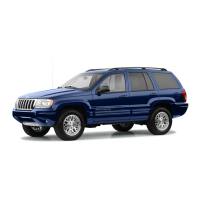
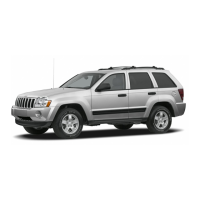
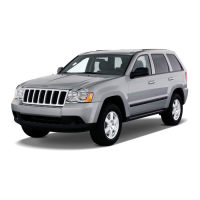
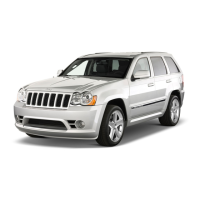
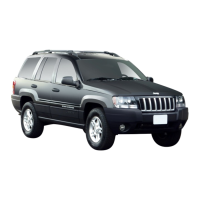






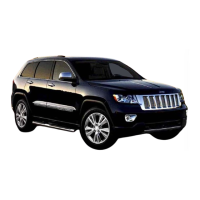
